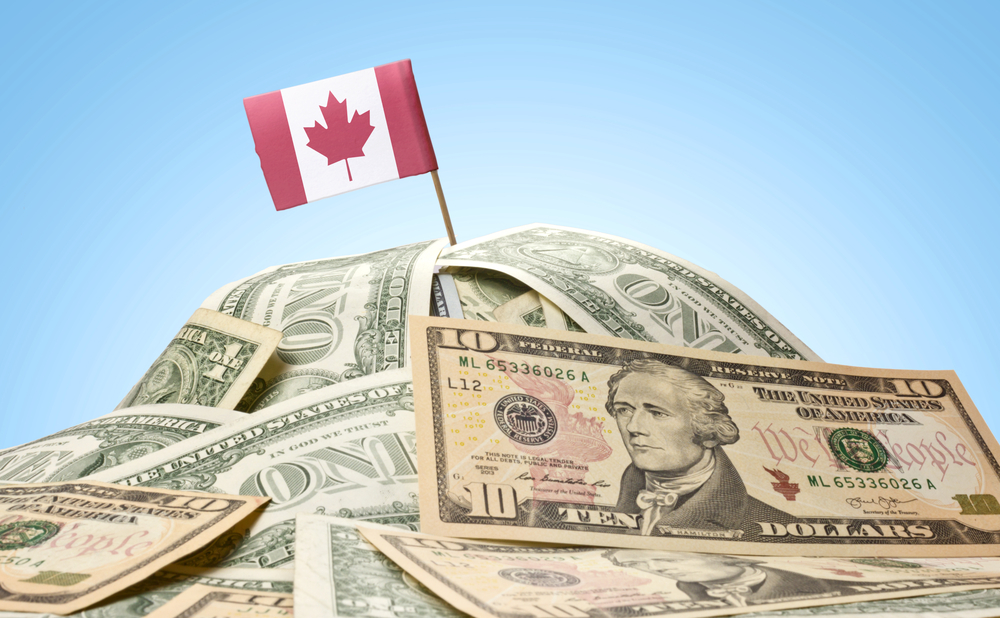The Canadian Dollar Gains Steam

Please note that we are not authorised to provide any investment advice. The content on this page is for information purposes only.
This is the sixth consecutive session the Canadian dollar is appreciating. The US dollar reached an 11-year high on September 29 near CAD1.3460. Today it traded to almost CAD1.2970. There have been four main drivers of the Canadian dollar advance.
First, the Canadian economy contraction that persisted through the first part of the year ended with renewed growth in June and July. Investors understood this as an indication that the Bank of Canada’s two rate cuts this year likely completes the mini-easing cycle.
This is the sixth consecutive session the Canadian dollar is appreciating. The US dollar reached an 11-year high on September 29 near CAD1.3460. Today it traded to almost CAD1.2970. There have been four main drivers of the Canadian dollar advance.
First, the Canadian economy contraction that persisted through the first part of the year ended with renewed growth in June and July. Investors understood this as an indication that the Bank of Canada’s two rate cuts this year likely completes the mini-easing cycle.
Second, the Federal Reserve delayed the rate hike that appeared signaled for September. The weak US jobs data (not just one data point but two) reduced whatever marginal risk there was for an October move. Many participants now do not expect a Fed hike until late in Q1 2016.
Third, because of these first two drivers, the interest rate premium the US pays over Canada for two-year borrowing has fallen from 30 bp in mid-September to 8 bp now. The Canadian dollar is sensitive to the interest rate different differential.
Fourth is the bounce in oil prices, especially over the past four sessions. The November crude oil futures contract has risen from just below $44 a barrel on October 2 to $49.70 today.
The Canadian dollar recovery may be over. The US dollar approached the retracement objective from the rally off the June 18 low near CAD1.2130. Oil prices are reversing lower. A move above $1.3100 would lend credence to our suspicions. It would signal a move toward CAD1.3160 and then CAD1.3200 initially.
Canada’s permits data was weaker than expected (-3.7% vs consensus +0.3%). The risk is on the downside for September housing starts that reports tomorrow. Friday brings the employment data, and the risk is on the downside here too. In August, Canada grew 54.4k full-time positions. Given Canada’ pace of growth, this is a bit of a fluke.
Many participants think that the Canadian dollar is a petro-currency. Canada does export oil. The August trade data reported yesterday showed Canada’s oil (and bitumen) exports are off almost 21% to C$6.3 bln. Yet Canada auto (and auto parts) exports were up 3.1% to C$7.85 bln. Remember that the eastern provinces import expensive Brent oil while the western provinces export cheaper product. Moreover, Canada is exempt from the prohibition against US oil exports. It is the main destination of US oil exports now. In addition, much of the oil and metals trade invoices in US dollars
Owing to the sharp move in prices, separating volume form value is particularly important. Consider that Canada’s exports fell 3.6%. However, the volume was only off 0.6%, but the value was 3% lower. Imports rose for the fourth month, but this too reflected these prices. The volume of imports was 0.1% lower while prices were 0.3% higher. The Canadian economy may have stopped contracting, but the negative terms of trade shock still adversely impact the economy.
Lastly, the national election is on October 19, and the race looks like a virtual dead heat. This raises some degree of political uncertainty that should keep the budding bulls in check.
Thoughts on the Canadian Dollar is republished with permission from Marc to Market




